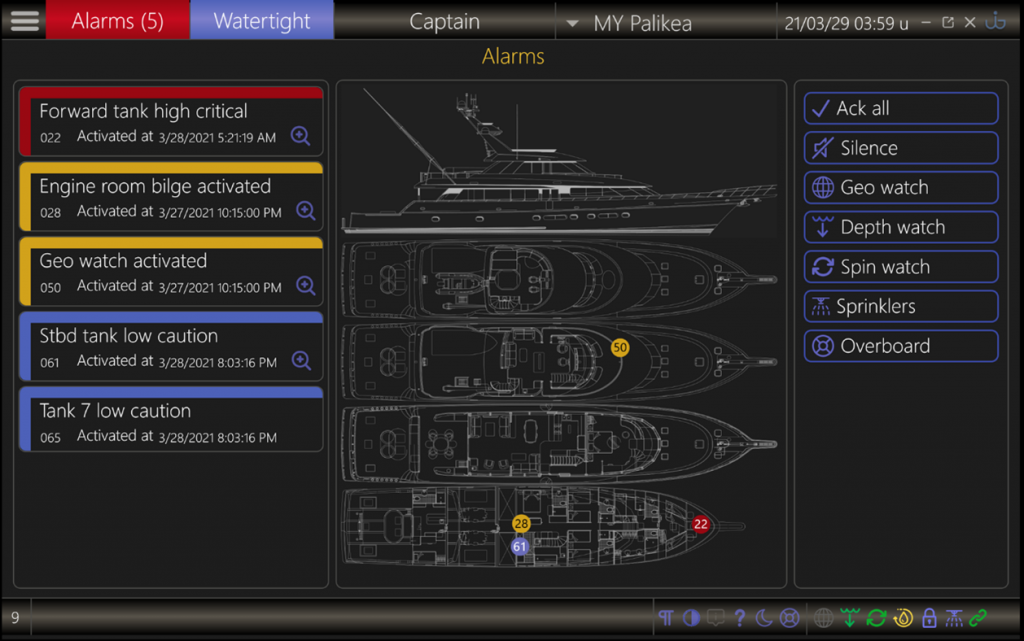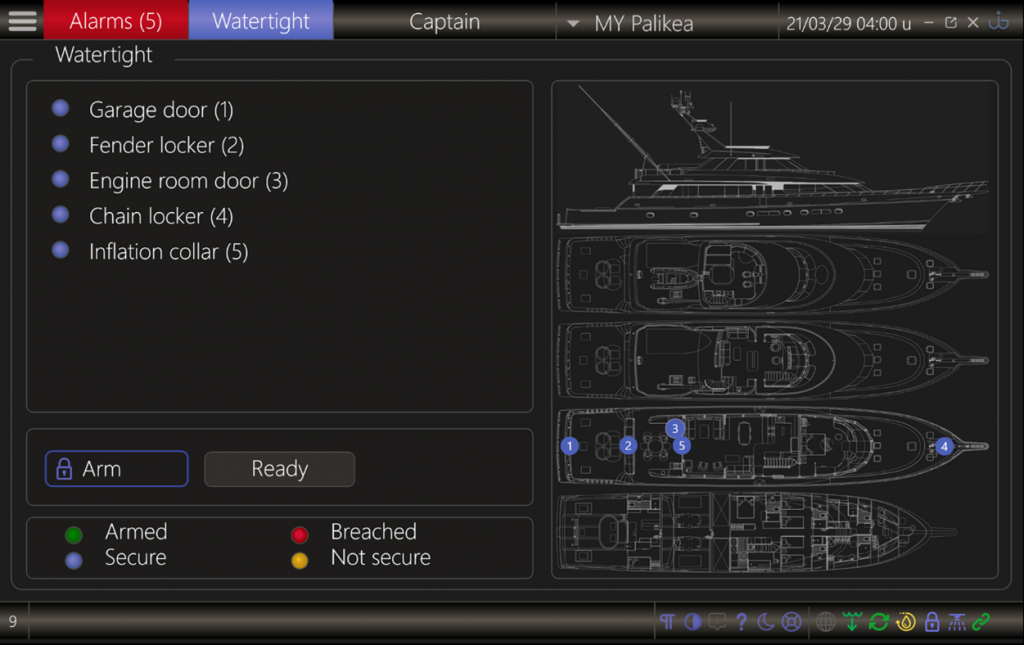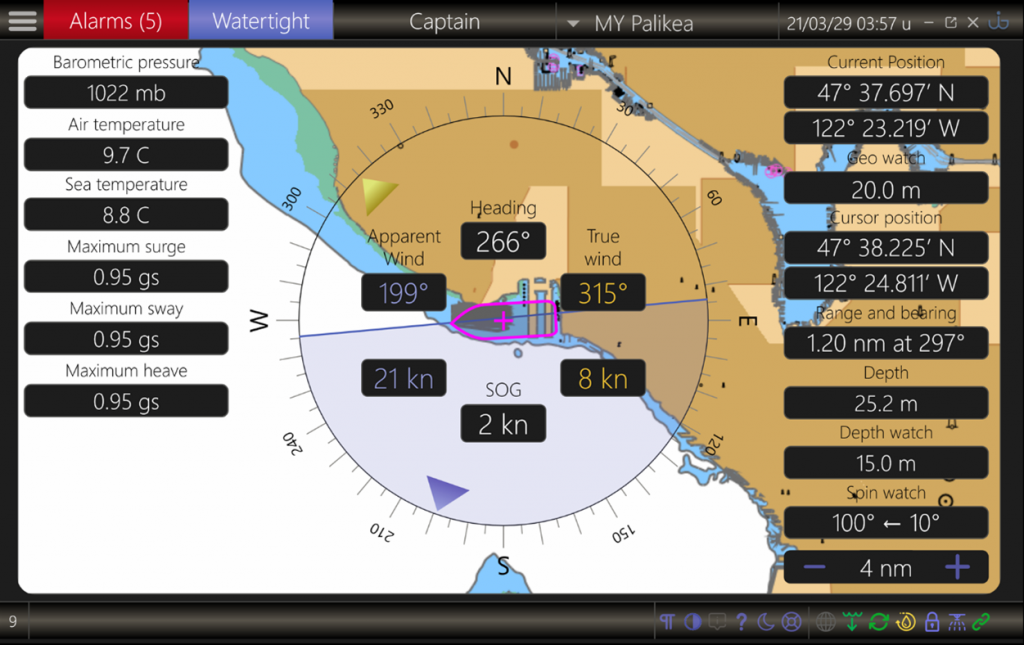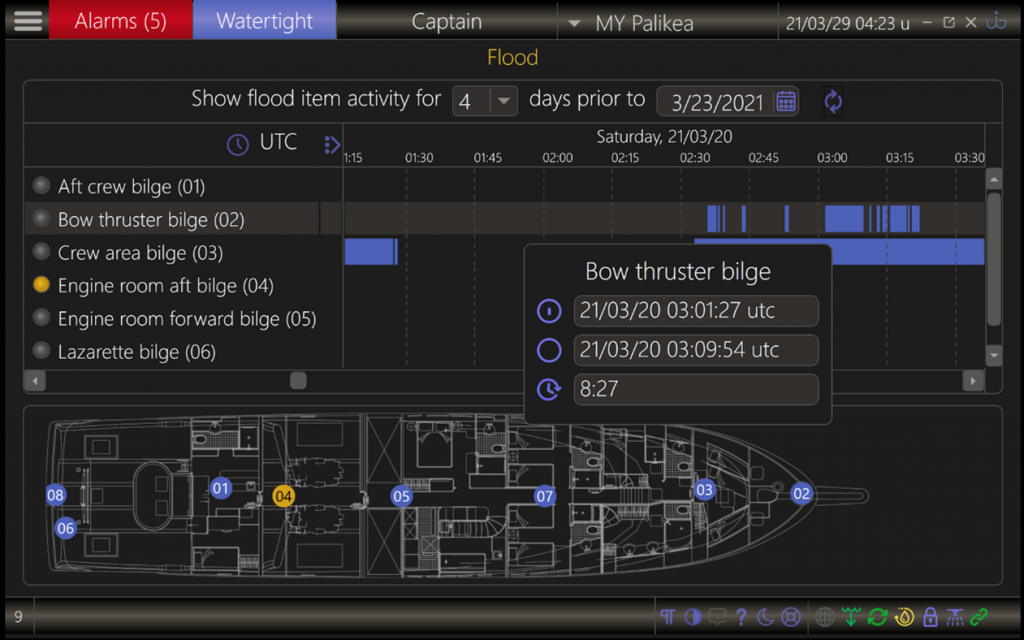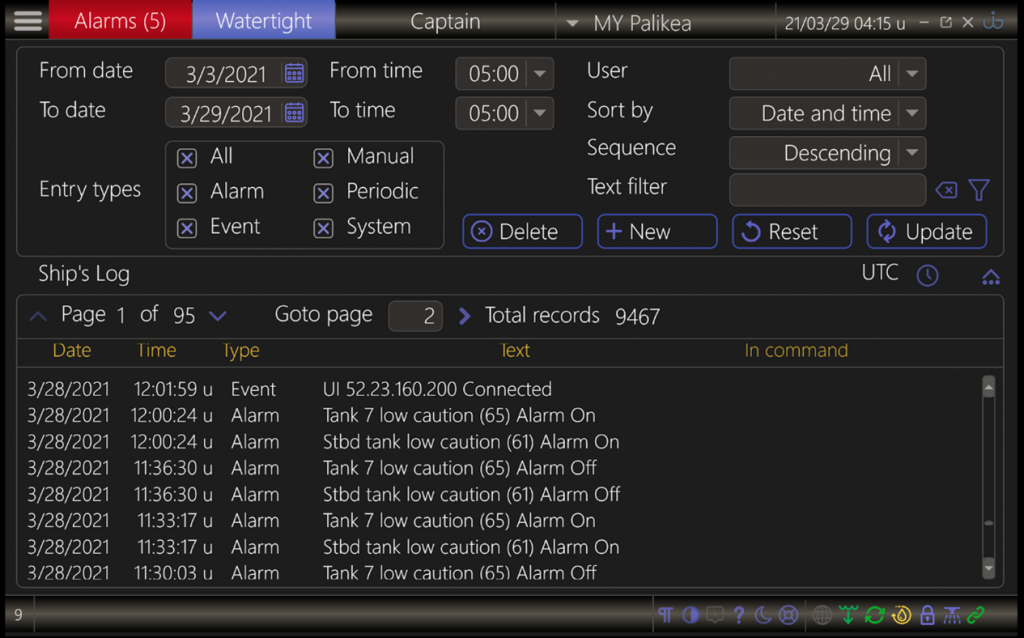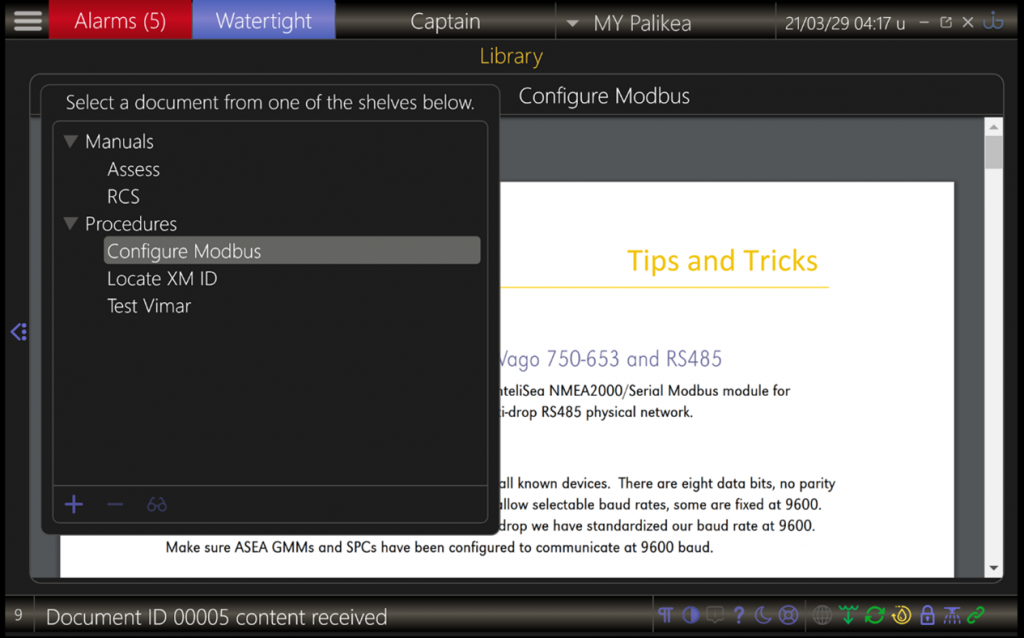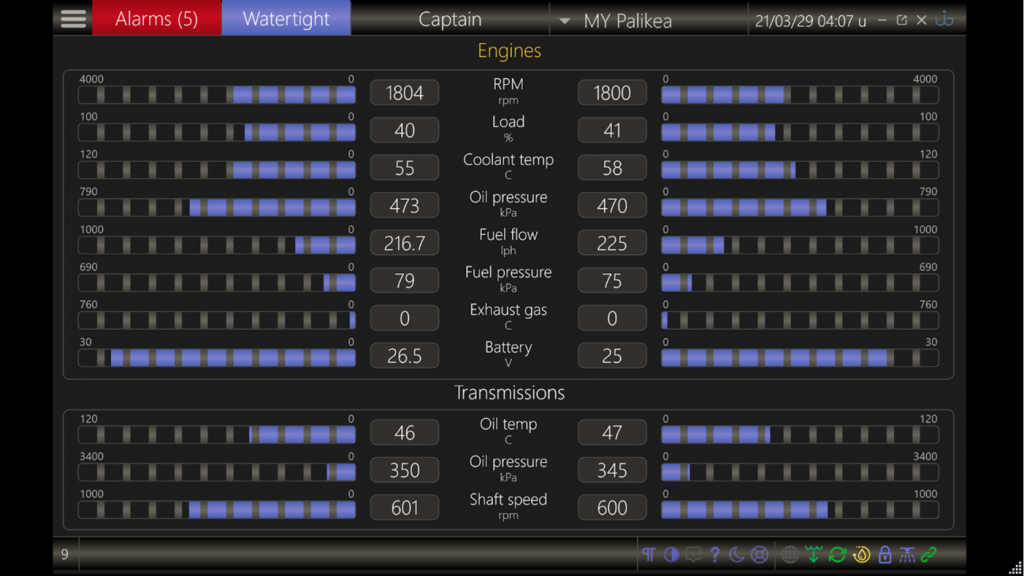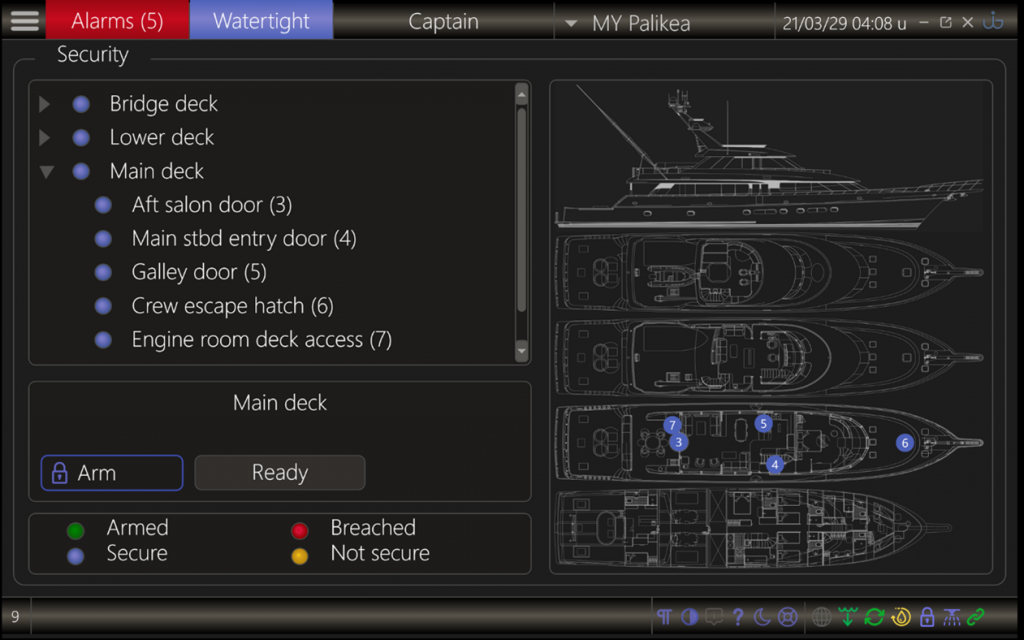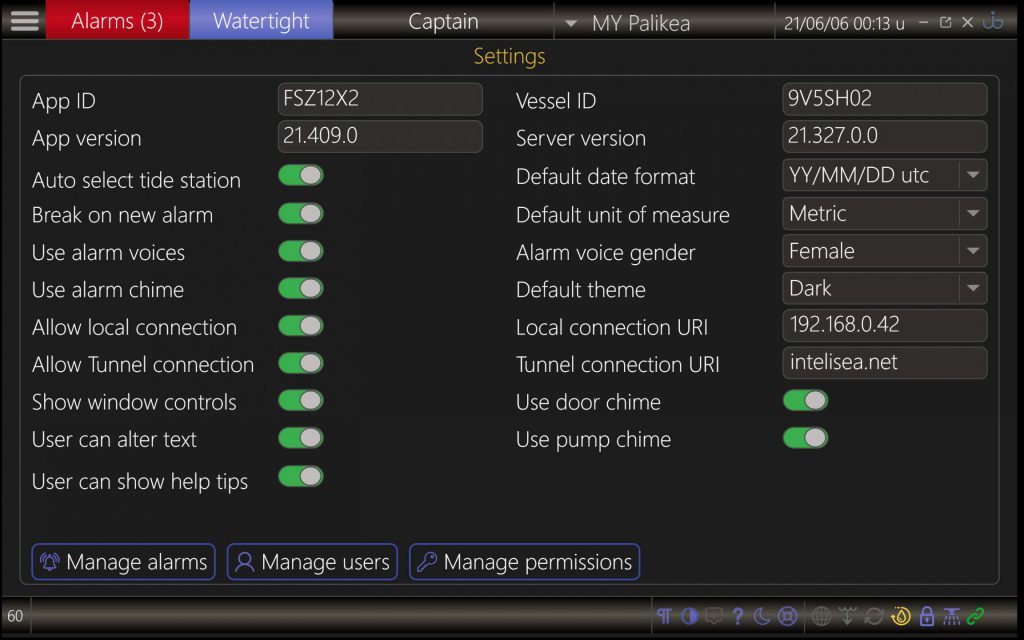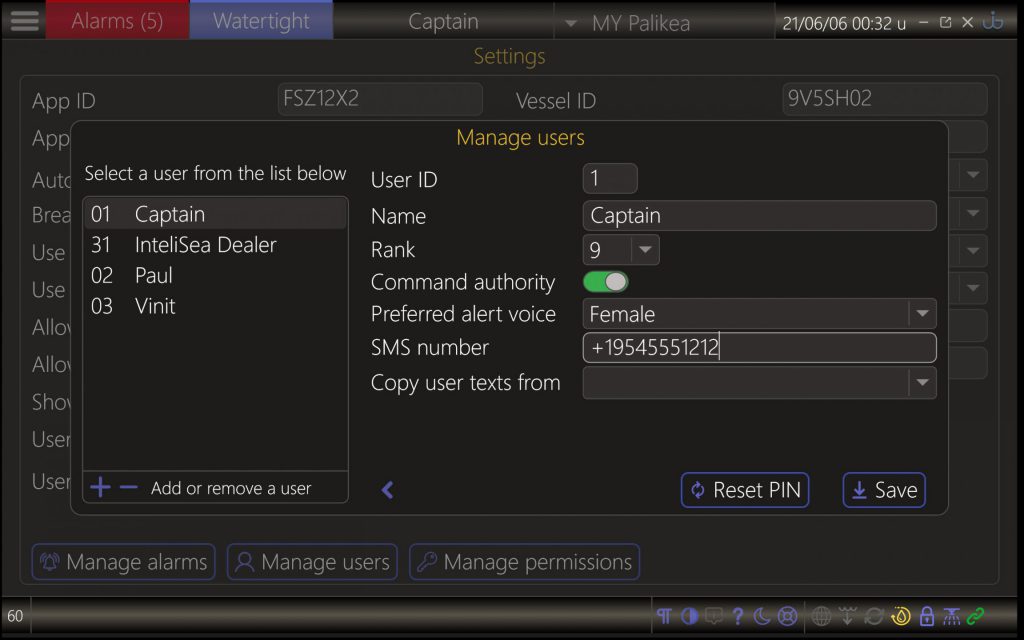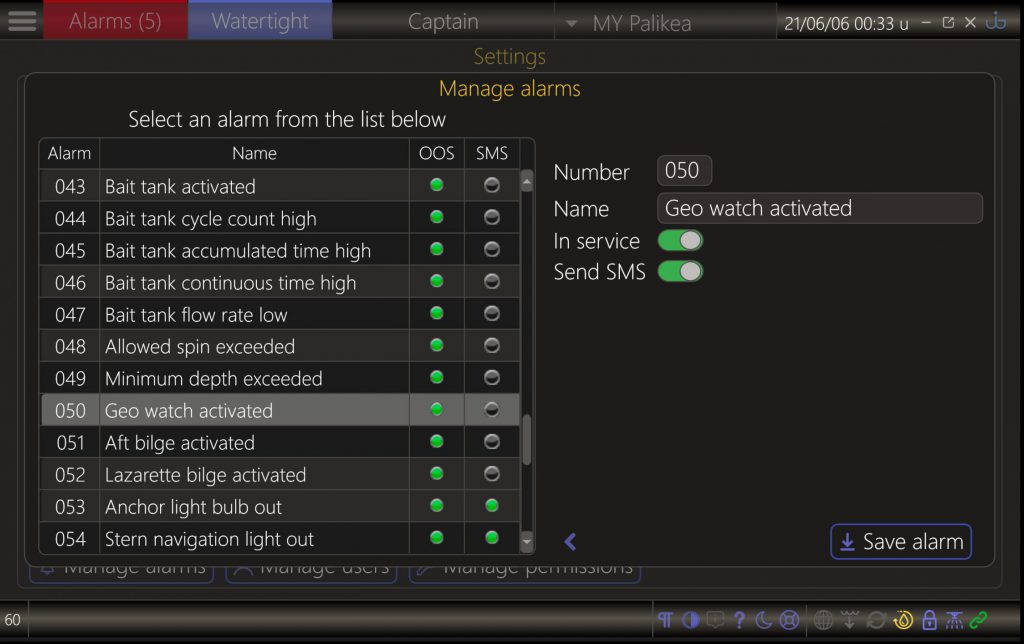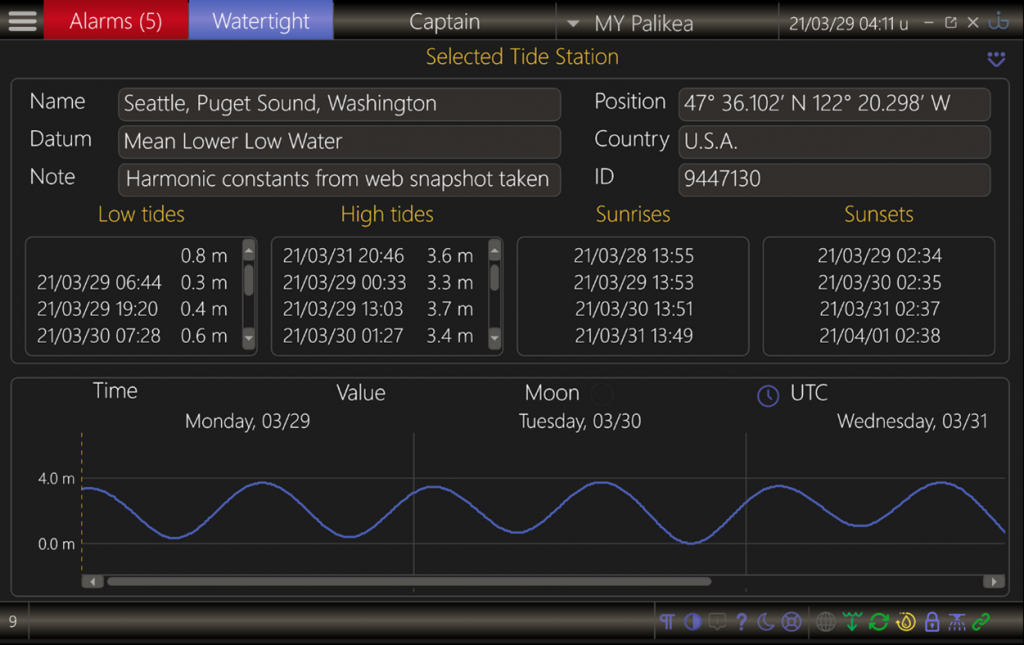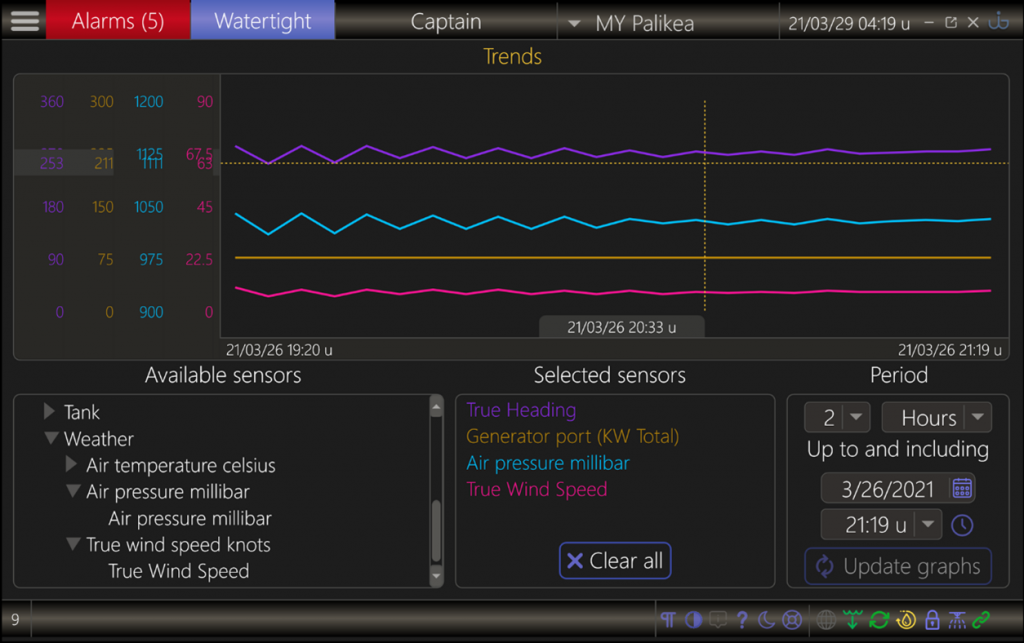Overview
What is an AMC system?
The InteliSea product falls into a broad category of shipboard systems called Alarm, Monitoring and Control. These “AMC” systems deal with the collection and display of information related to the efficient and safe operation of a vessel. In most cases they are only a part of a collection of systems that provide such information. For example, a fire AMC system might only deal with the reporting and control of fire suppression equipment. A flood AMC system might only deal with the reporting and control of bilge water levels and pumps. InteliSea takes the place of all these different systems, integrating all needed functions within a single application.
What makes InteliSea different?
InteliSea has taken some established concepts of aircraft operations and applied them to the maritime industry. “Cockpit Resource Management” is a discipline all pilots study. CRM teaches pilots to deal with both normal and emergency situations in a defined and predictable way. InteliSea has modeled its adaptation of “Bridge Resource Management” on CRM and is an evangelist of its use. Our designers are experts in this emerging discipline.
Additionally, InteliSea uses modern visual design techniques to ensure information is presented simply and consistently. Again, lessons from aviation were applied. While it is common for a pilot to quickly adapt to the equipment in a different airplane, the same cannot be said for the bridge of a vessel. Each piece of equipment on a vessel is likely operated differently than the same equipment on another vessel, or from any other system on the same vessel. This requires vessel crew to be re-trained time and again, if they are trained at all. This also causes crew to learn only the basics of important safety systems. They do not take the time to become fluent in all the features and capabilities that might be available. InteliSea is intuitive. It works the same way regardless of the vessel on which it is installed, or the vessel system it is presenting.
While technology is necessary, InteliSea stresses “modality” over “technology”. Modality is an important concept in information design. Modality directs us to emphasize how our product is used rather than how our product is made. We employ visual design concepts such as the Gestalt Laws of similarity, symmetry, commonality and continuity, in addition to well understood visual scan patterns to make sure our product is as intuitive as possible. Just because we can do something, doesn’t mean we should do it.
InteliSea Layered Architecture
InteliSea is based on a multi-tier architecture. We use a combination of computers, electronic sensors and industrial automation hardware all designed to work together.
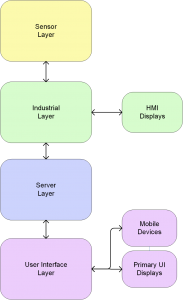
Sensor Layer – This layer includes all components upon which InteliSea relies to gather information or perform actions at the lowest level. Examples of information gathering sensors include smoke/heat sensors, temperature sensors, carbon monoxide sensors, bilge float sensors, pump flow sensors, watertight door seal sensors, inertial sensors, GPS and others.
Industrial Layer– This layer includes all the PLC or IPC components that interact with the Sensor Layer. Examples of these components are CPUs, analog modules, discrete modules, counters, network modules, gateways, HMI displays, SMS auto dialers and power supply modules.
Server Layer – This layer includes all the computer components used to interact with the lower level Industrial Layer and the higher level Presentation Layer. The primary computer manages the Industrial Layer telemetry, chart rendering, primary user interface, remote user interfaces and the InteliSea Ria™ mobile device clients.
Presentation Layer – Although significant user interface function is available in the Industrial Layer, most user interaction with InteliSea takes place from computer displays. The Presentation Layer manages the connection and display of multiple computer displays. Remote access, although making use of the internet, does not rely on a browser or other middle presentation manager. Private TCP port connections and PIN identity prevent unauthorized access, hacking or similar malicious activity when accessing from outside the internal vessel network.
“Last Man Standing”
The InteliSea architecture is based upon a concept called “Last Man Standing”. This means the different components making up the system, although designed to work together, are encapsulated. Each is capable of continuing operation should one or more of its peers fail. Moreover, these different components continually evaluate each other to determine the health of the entire system. If one component fails, the system issues an alarm and the rest of the system is not affected. Additionally, the entire InteliSea industrial layer is powered by the vessel’s 24V DC power system. InteliSea will continue to operate, even in the case of complete machinery failure aboard a vessel.
Classing
Within the marine industry, classing societies regulate the design, construction and operation of large vessels. Among other benefits, a classed vessel will receive favorable insurance rates, operate easily with international crew and allow charter passengers. InteliSea can be installed on “classed” or non-classed vessels. As part of the certification for a classed vessel, InteliSea must also be “classed”. Classing is a complicated process and the InteliSea system has passed with flying colors. One builder representative commented that in all their years in shipbuilding they had never seen a classing submission accepted without comment. Yet that is exactly what happened when InteliSea received its ABS approval.
Self Aware
Remote I/O assemblies are regularly ‘pinged’ to ensure they are online and functioning properly. In the event an assembly does not respond properly to a status ping, an alarm will be generated and sent to the Industrial HMIs, UI server and vessel log. The InteliSea system provides the following power awareness features:
- All fuses are monitored for “blown” condition. Fuses for remote I/O assemblies are cross checked by other remote I/O assemblies so no component relies solely on itself to report its health.
- Incoming DC power is monitored for proper voltage and alarms are triggered early enough to allow the crew to assess the problem prior to shut down of the system.
- All assemblies are optionally monitored for temperature. Alarms are triggered prior to an assembly reaching hardware specification temperature limits.
Features
Alarms
InteliSea provides interactive alarms and emergency procedures for defined alarm events.
Watertight
InteliSea monitors watertight doors. Features include automatic arming of the watertight system when the vessel is underway.
Situation
The home page of the presentation client offers an overall view of the vessel situation. It includes weather, position, depth, sea state, and watch set values, all overlayed on a nautical chart. The chart can be panned and zoomed.
Flood
InteliSea provides an abundance of float and pump information, all linked to alarms including activation, average time on, accumulated time on and flow rate.
Electrics
InteliSea provides monitoring and distribution control of AC and DC power throughout the vessel.
Internationalization
InteliSea provides every user with personalized language capabilities. Every label and button on every panel of the InteliSea primary user interface can be displayed in any language based upon user logon.
Ship’s Log
InteliSea provides a complete ship’s log with entries of the following types:
- Alarms – Examples are fire, flood, power failure, intrusion, etc.
- Events – Examples are logon, anchor down, command change, etc.
- Periodic – Examples are fuel level, ambient temperatures, generator load, etc.
- System events – Examples are network link failure, module offline, configuration change, etc.
- Manual entries – Examples are maintenance note, weather observation, crew review, etc.
Each log entry, regardless of type, contains date, time, position, speed, officer in command, wind speed, wind direction, sea temperature, air temperature, barometric pressure, surge peak, heave peak, sway peak, pitch peak, roll peak and inertial peak duration.
Library
PDF documents can be uploaded to the vessel server from the UIX2 client. The library is organized into shelves for manuals, procedures, destinations, galley documents and reference documents. Procedures and manuals can be linked to alarm resolution aids for quick access.
Machinery
InteliSea provides monitoring of main engines, generators and hydraulic systems. Any analog or discrete sensor can be added to the machinery page. It is an ideal way of viewing watermaker, temperature and other miscellaneous values.
Propulsion
InteliSea provides monitoring of main engine information.
Security
InteliSea provides intrusion monitoring. Zones can be armed and disarmed independently either on the vessel or remotely. A duress PIN allows for added protection.
Settings
The UI-X2 client can be tailored to the needs of each user. Aesthetic and behavior changes are immediately sent to the vessel server and propagated to all connected clients on the system.
Manage users
Within settings, user profiles can be added, changed or deleted. Passwords are encrypted and are never stored or sent as clear text.
Manage alarms
Within settings, alarm behavior properties can be changed. Alarms can be set in or out of service. SMS text messages can be enabled or disabled for each alarm.
Manage permissions
Authority to system tasks is controlled by permissions. Within settings, each task can have its permission profile changed.
Tanks
InteliSea provides management of fuels, water and waste. Automatic management of transfer valves and pumps is included.
Tide
InteliSea displays tide and current predictions for both present and future time. Stations can be selected automatically based on proximity or manually using station search tools.
Trends and Analytics
InteliSea provides a trend page which allows the user to graph the values of selected sensors over varying time periods.

